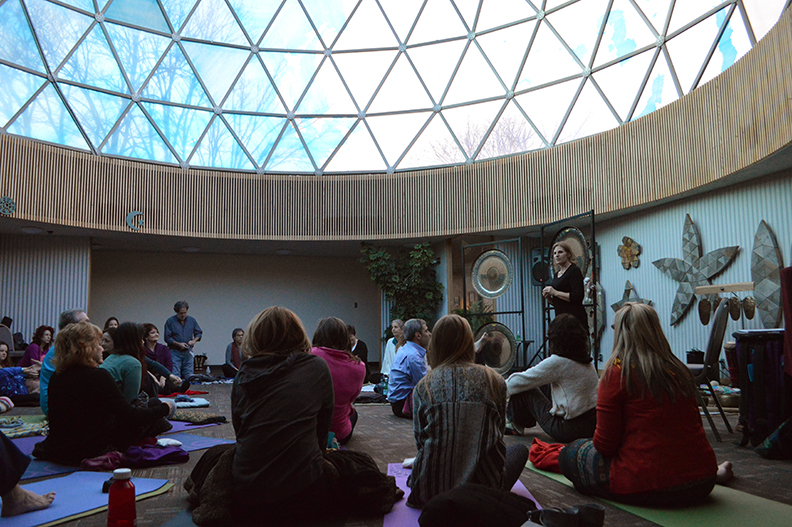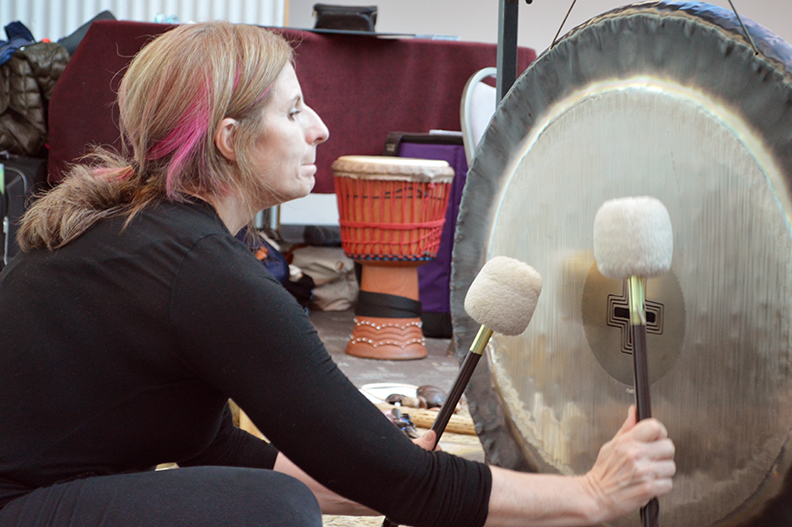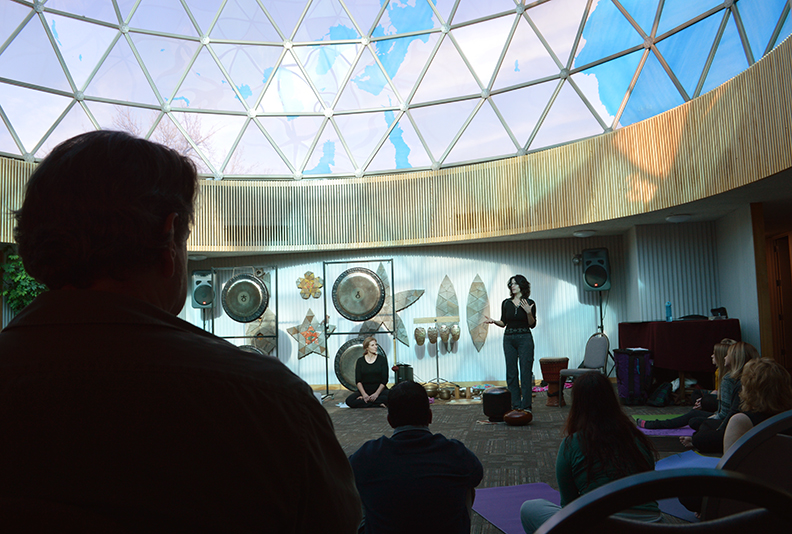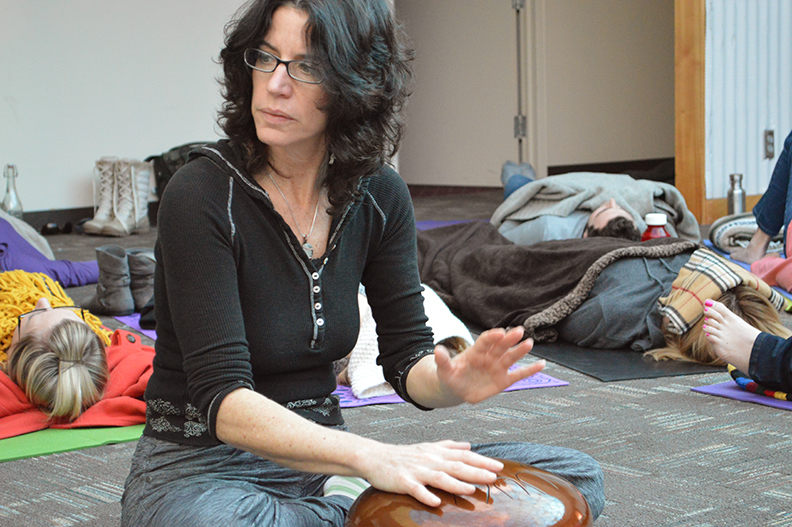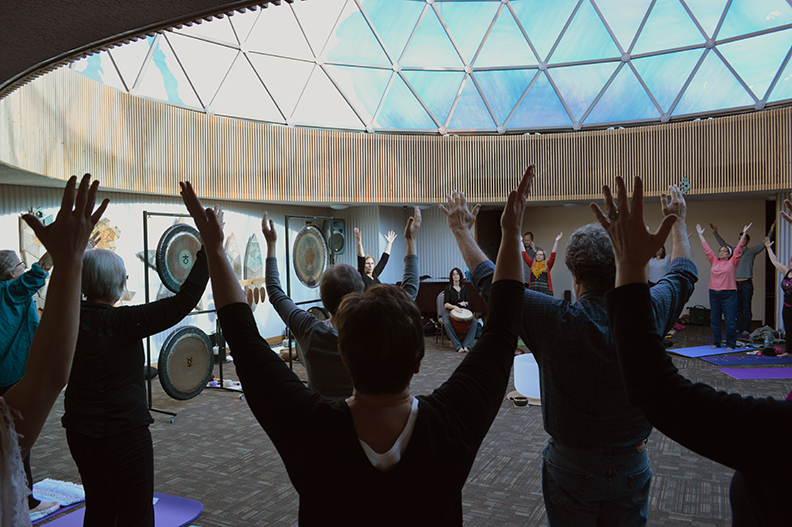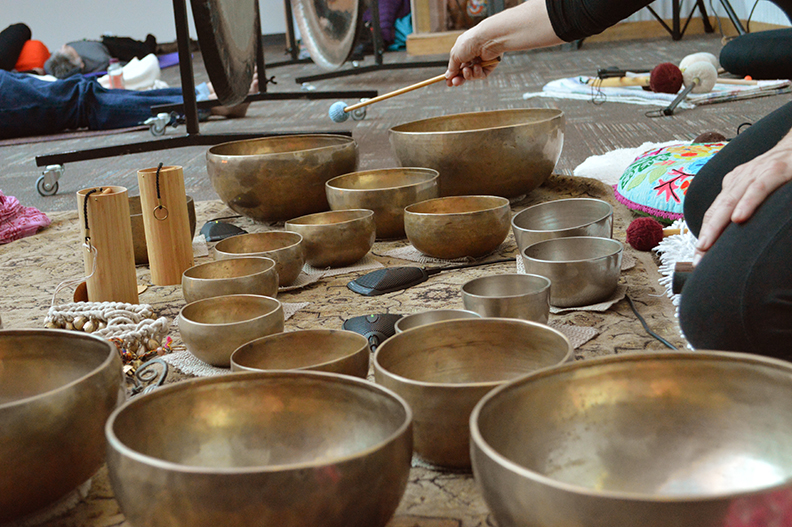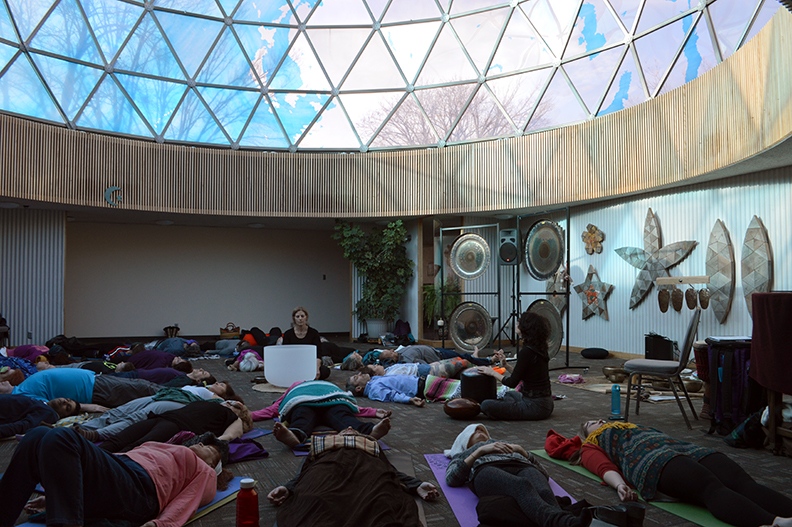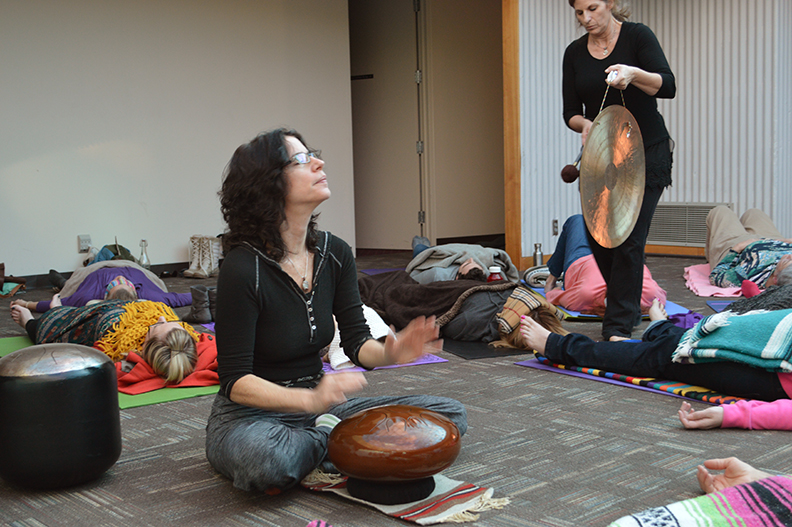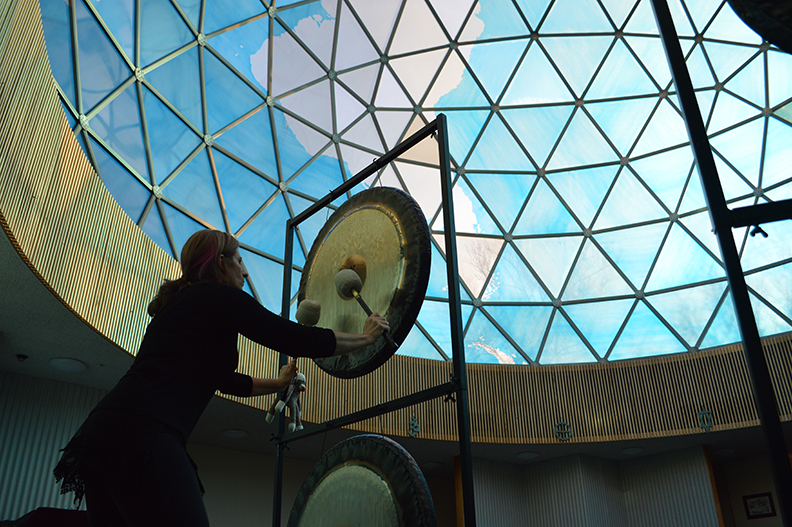The Girls Empowered by Math and Science (G.E.M.S.) from Alton Middle School made a field trip to the Fuller Dome again this year. The G.E.M.S. were brought to the dome, by their sponsor from Alton Middle School, Ms. O'Connor. They stayed for a talk from Benjamin Lowder on the history of the dome and it's connection to the geodesic dome's patent holder and biggest proponent Buckminster Fuller. The dome is used as a real-world example to inspire the girls to see the power that math and science have for discovering engineering solutions that can bring social and environmental equity.
Fuller Dome Selfie Contest
Post a photo of yourself with the Fuller Dome at SIUE to Instagram with the tag #fullerdomesiue and the selfie with the most "likes" by noon of 3/30/16 WINS! The winner will be awarded a prize package being donated from SIUE campus and Edwardsville area businesses.
2nd Date Added for Fuller Play in the Dome
SIUE's Arts & Issues program is bringing D.W. Jacobs' thought provoking play, "R. Buckminster Fuller: The History (and Mystery) of the Universe" to the Fuller Dome. This will be the first time this play has been performed in a geodesic dome designed and built by Bucky himself. The first date has sold out and a second has been added for Friday, April 1st at 7:30 PM in the Fuller Dome on the SIUE campus.
Patti Pellerito using her gongs to fill the dome with good vibrations.
"Rhythm and Flow" a Sacred Geometric Sound Journey
On 1/23/16, Stephanie Kusmer of Earth Rhythms Healing and Pati Pellerito CSH (Certified Sound Healer) in collaboration with the Center for Spirituality and Sustainability’s creative director Benjamin Lowder presented an afternoon of informative discussion and sacred sound healing. Benjamin discussed, sacred geometry, the history of the dome, and the significance of it's location on the earth's 90th meridian. Pati and Stephanie then guided the group on a sound journey with Tibetan singing bowls, gongs, drums and rattles. Those in attendance reported having some rather profound experiences resulting from this 3 hour event held in the Fuller Dome. Watch this site for the next "Sound Journey" scheduled in the Fuller Dome.
Shoji Sadao, Buckminster Fuller's architectural partner speaking in 2003
Shoji Sadao shares his fascinating first hand account of the career he spent designing revolutionary structures with Buckminster Fuller. He mentions he and Bucky's design collaboration on our dome at about the 15 minute mark of this film.
2015 Celebration of World Faiths
EMBRACING OUR MUSLIM NEIGHBORS
The Fuller Dome, on the campus of Southern Illinois University in Edwardsville, was the setting for an evening of sharing worldviews and perspectives on the Muslim faith as it is experienced in the United States today. A panel of Muslim-Americans along with moderator Steve Tamari and 2014 C.S.S. "Spiritual Leadership" award recipient Rev. Anne Clark came together to build bridges of understanding among people of different faith traditions. Listed below are a series of questions presented to our panelists during the 2015 C. W. F. Please join in on the discussion began in the dome and continued here in the comment section of this post. Thank you in advance for keep the dialogue elevated and respectful.
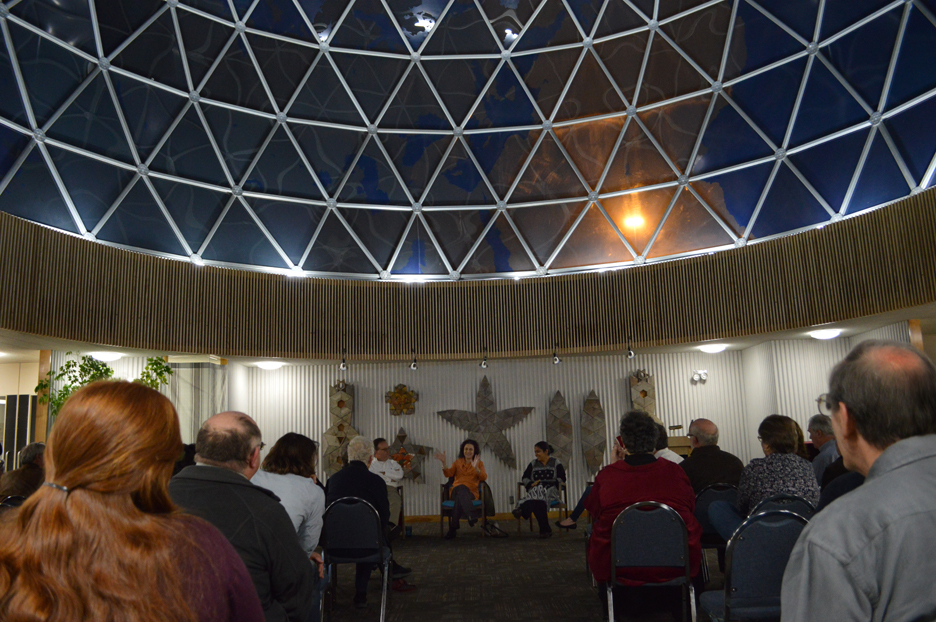
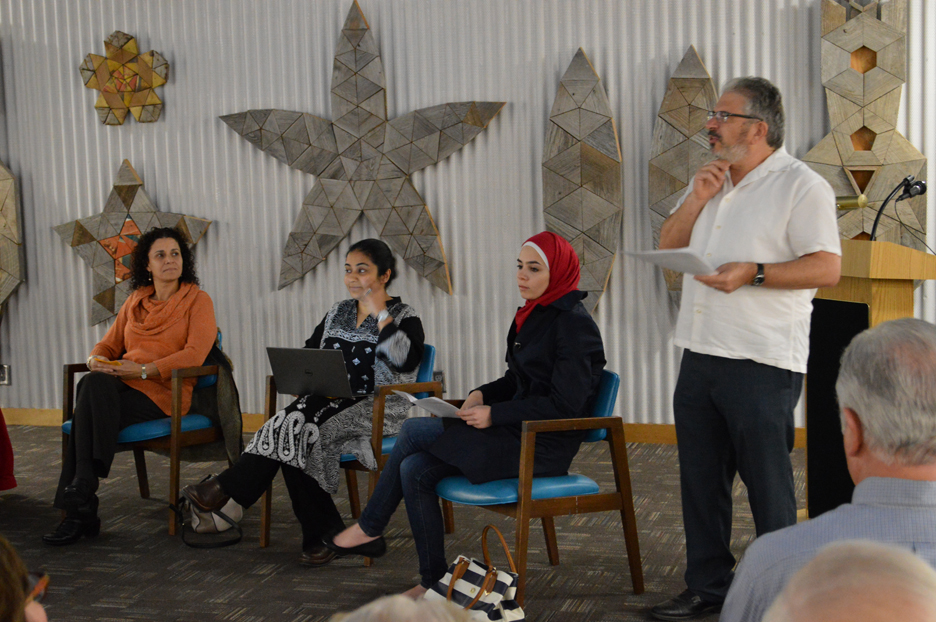
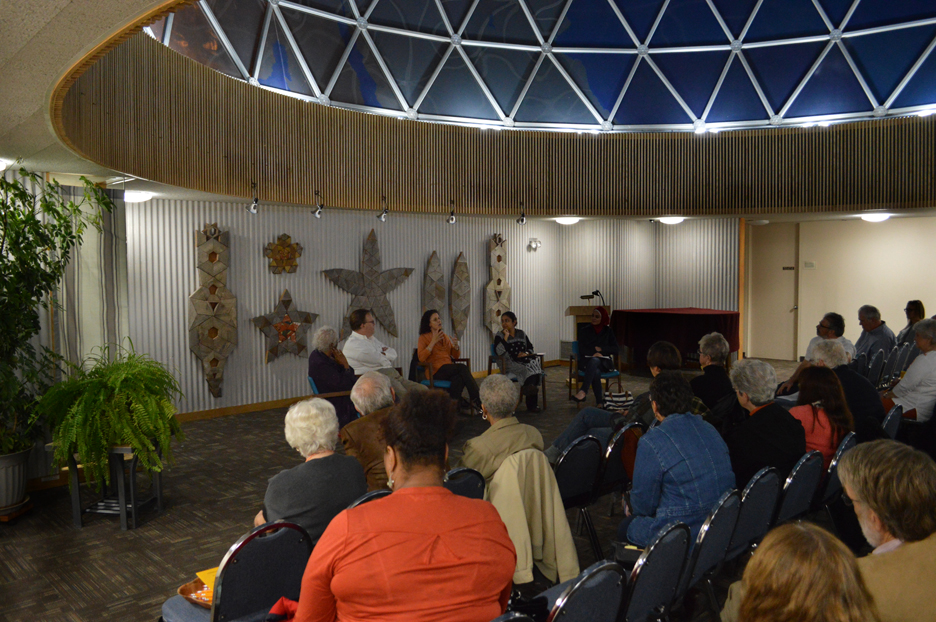

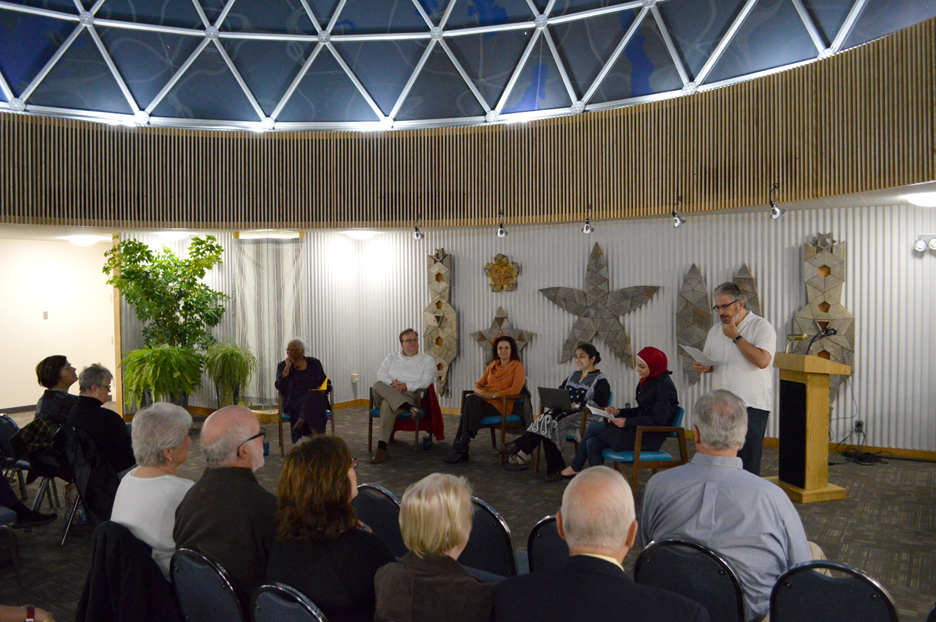
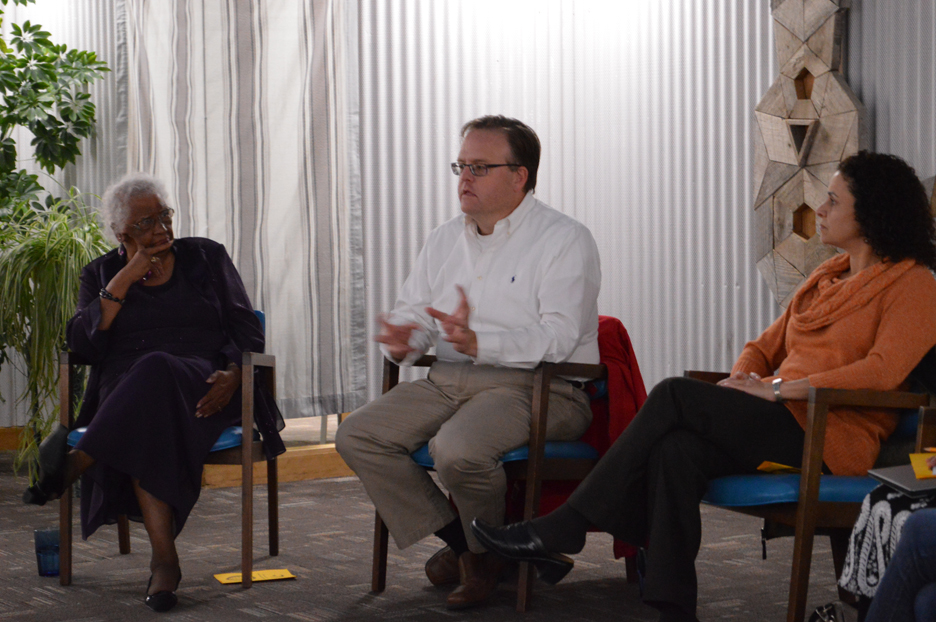
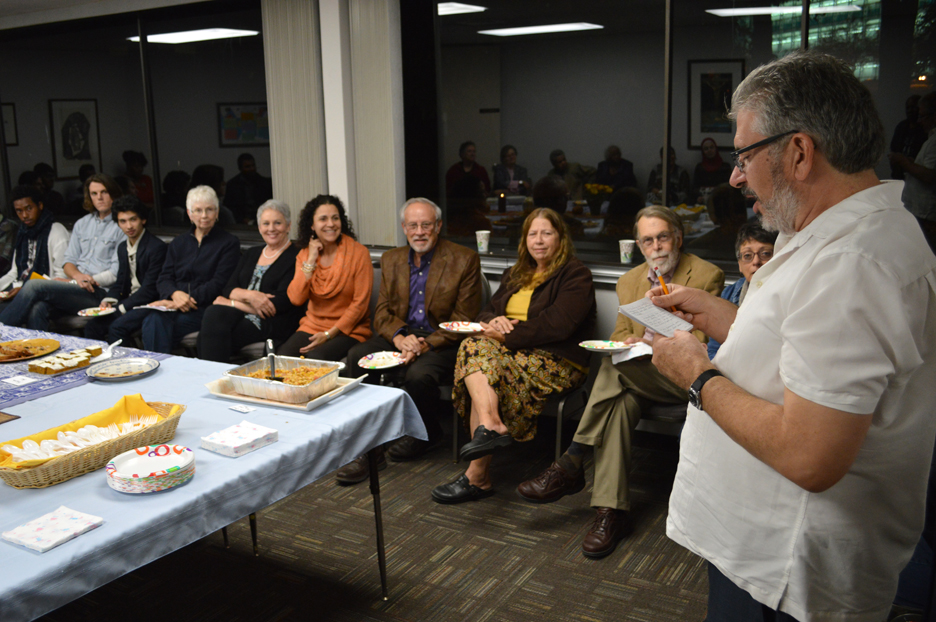

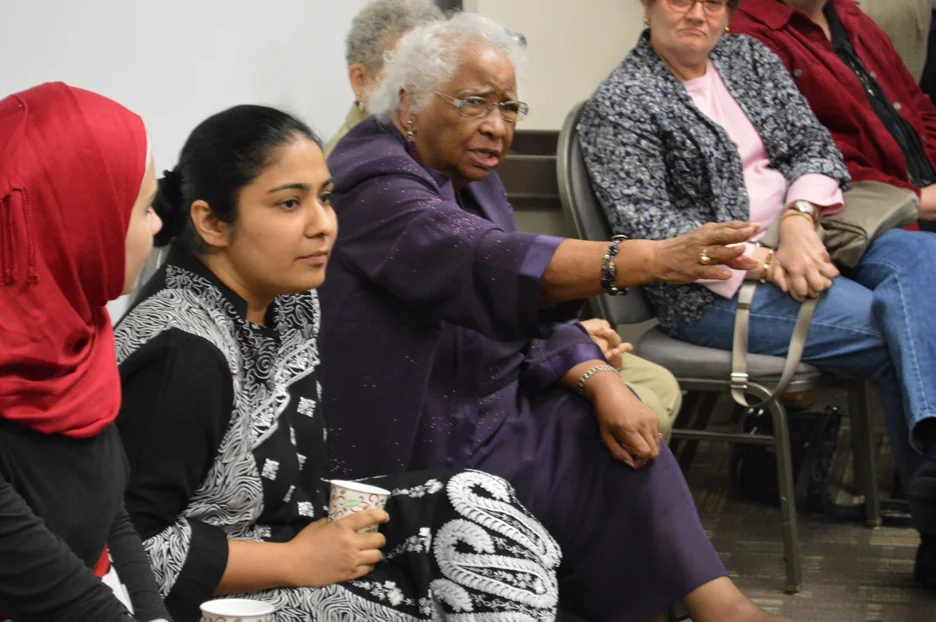
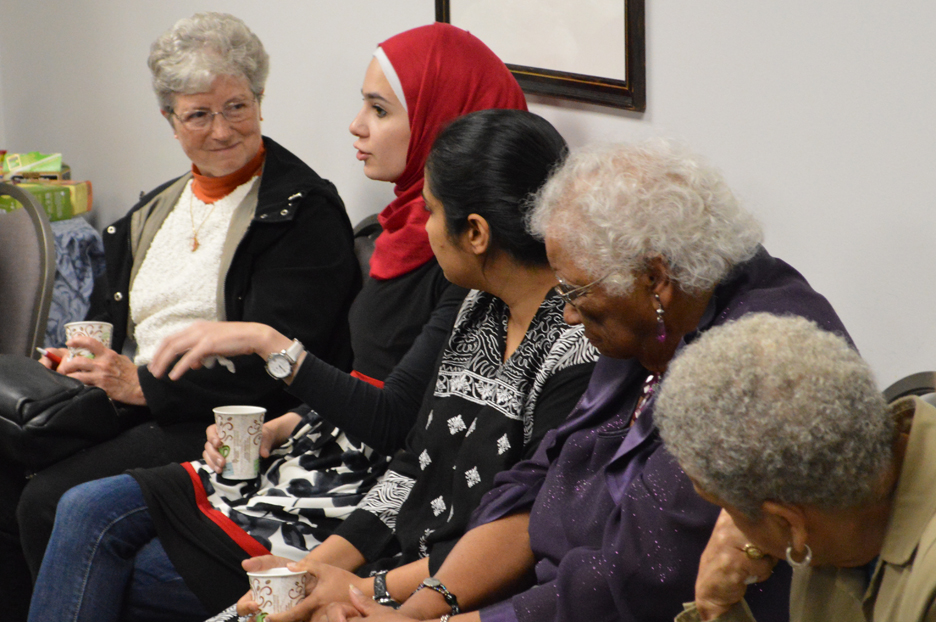
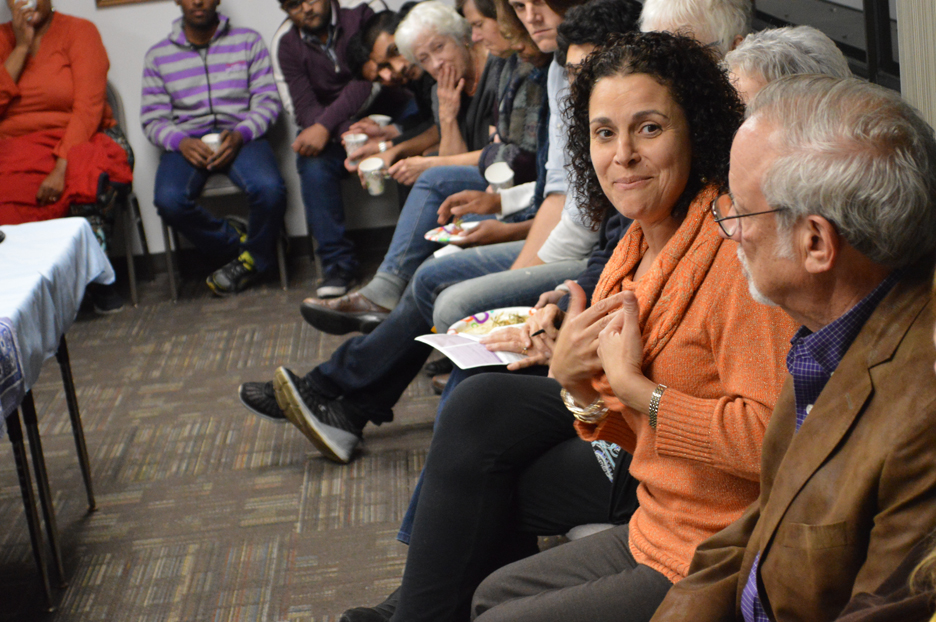
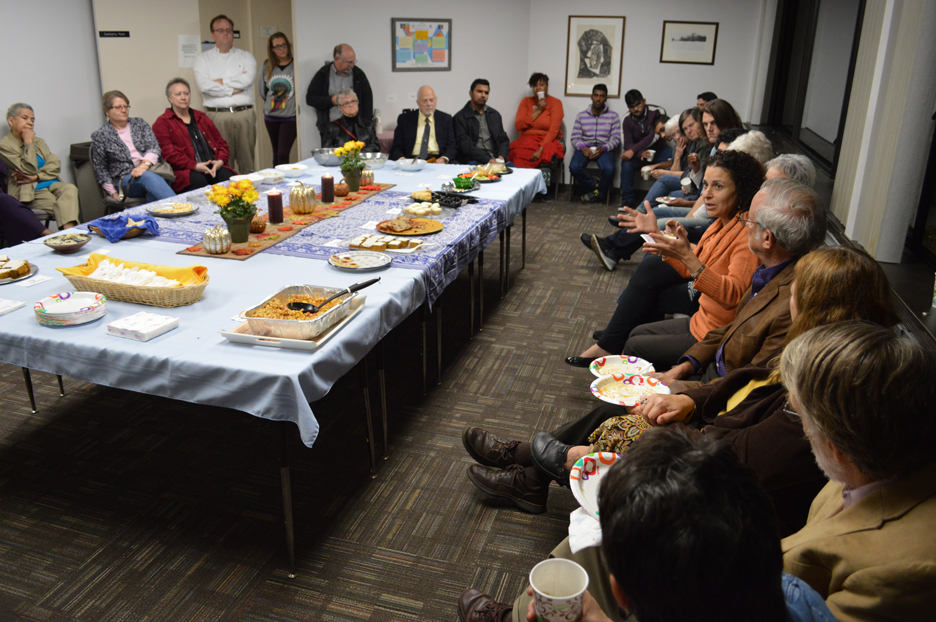
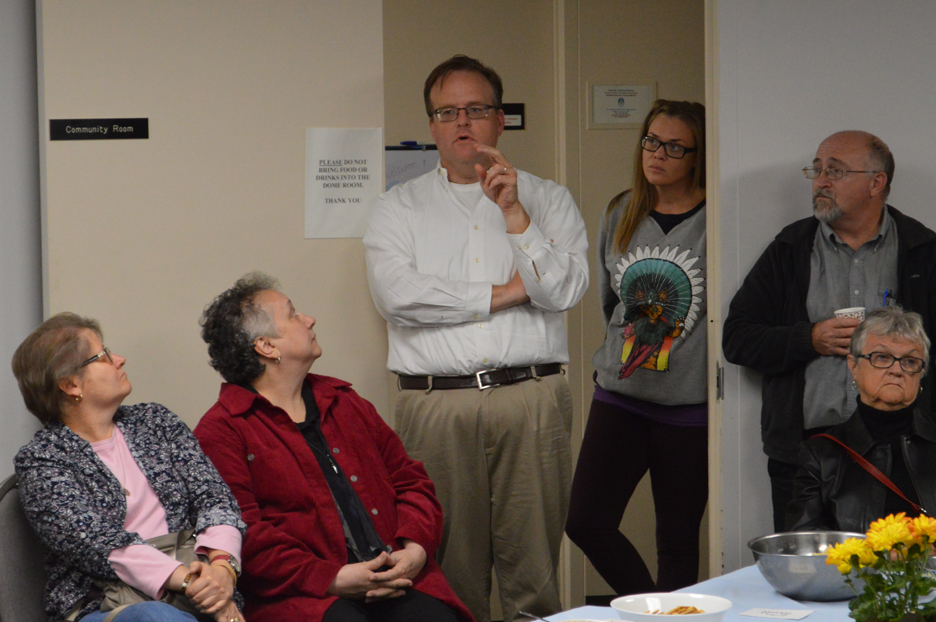
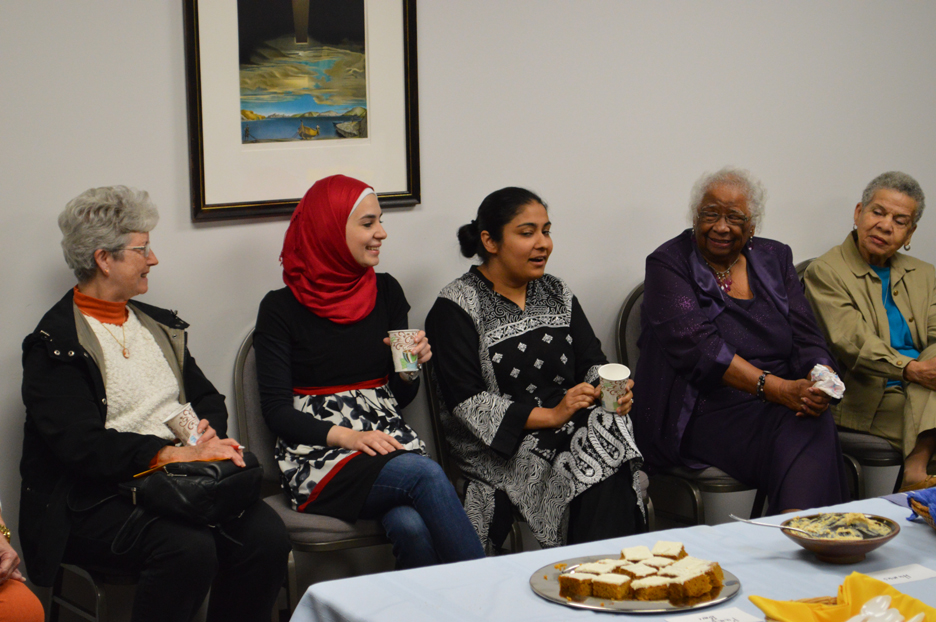
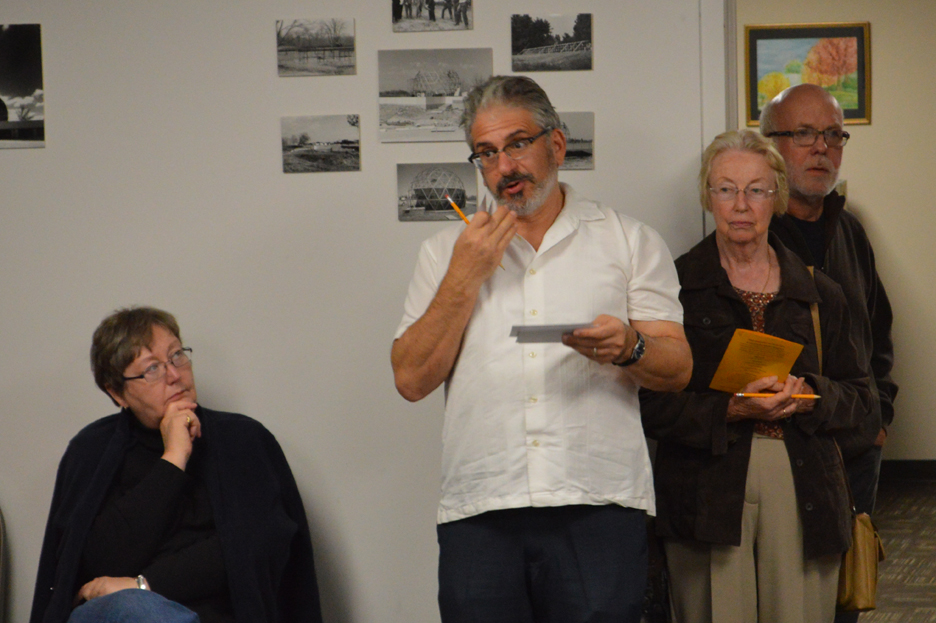
Due to time constraints here are a few questions that our panelist were unable to answer during the C. W. F. Our panel is being invited to answer these questions and continue the discussion in the comment section below.
- What are some points we should make in replying to friends who believe that Islam teaches the oppression of women?
- What causes extremism among some Muslims, and do such groups as the Taliban and Boko Haram consider themselves observant Muslims? How do they attempt to justify their violet acts?
- During the discussion, Karen Armstrong was mentioned as a theologian than has written much on Islam. What specific books of hers are recommended?
- What are the prevalent misunderstandings in the U. S. of Sharia Law, and how have they come about?
- Is there a concept similar to the "golden rule" found in the Koran?
- How do diverse Muslim populations in different countries, such as Afghanistan, Iran and the Arab Peninsula, differ in their or interpretations of the Koran?
- How does someone learn more about the Interfaith Partnership organizations mentioned by the panelists that were organized in response to the 9/11 attacks on the World Trade Center?
Answers and discussion of these questions can be made by referring to the question by it's number listed above.
2015 Celebration of World Faiths
Join us in the dome for this engaging panel discussion on 10/17/15 at 7:00 PM
Bucky Brought to Life
WARNING, tickets are selling fast for this 3/31/16 performance of "R. Buckminster Fuller: The History (and Mystery) of the Universe" created and performed by the talented D. W. Jacobs.
This is the first time that this play will be performed in a dome actually designed by Buckminster Fuller himself. The play is brought to the Center for Spirituality and Sustainability dome on the SIUE campus by the university's Arts & Issues program and it is set to be a very special event as Jacobs plays the role of Bucky leading the audience on an autobiographical journey through his life. Fuller's own words are the content of this one man performance that creates an engaging narrative while illustrating the profound genius of Buckminster Fuller. ACT NOW - TICKETS ARE LIMITED FOR THIS IMPORTANT PERFORMANCE:
Tebe Zalango - From the Dome

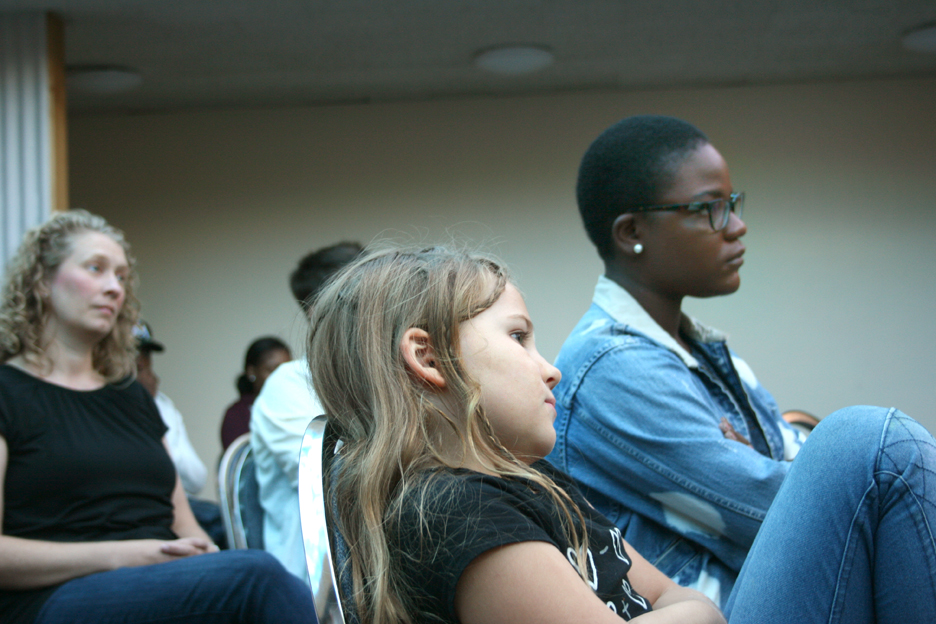
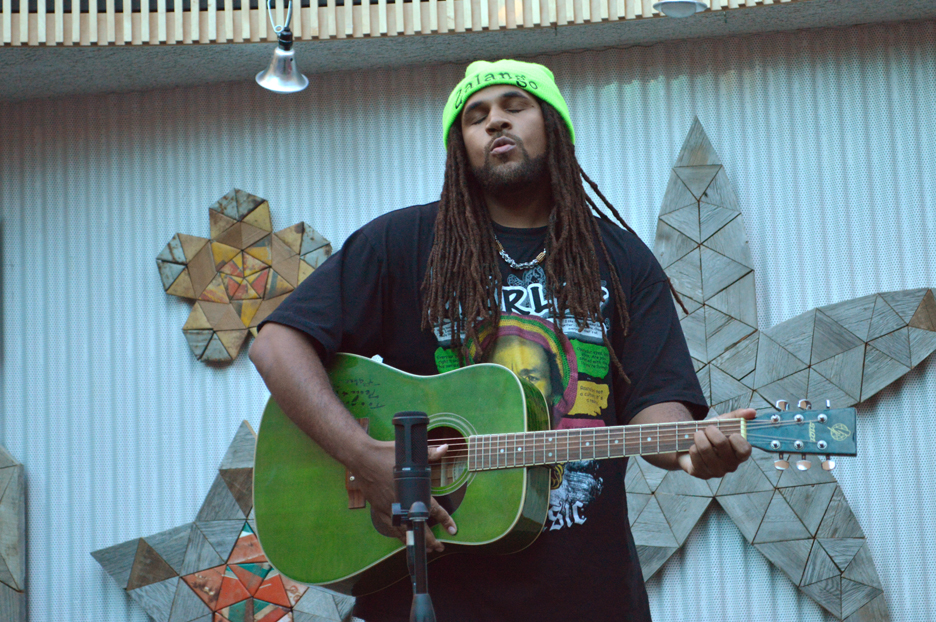
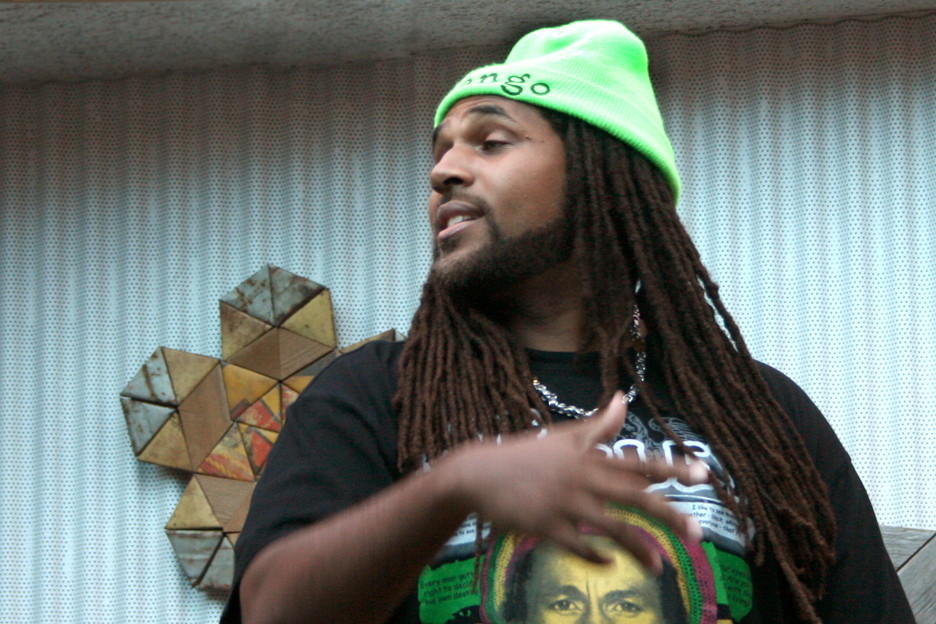

A few of those in attendance for Tebe Zalango's performance were moved to tears by the content of his lyrics and the rich sound of his stringed instruments reverberating in the dome. Violinist, singer and poet Tebe Zalango gave a moving performance in the dome on 9/12/15. Tebe has been playing the violin since hearing Italian composer Antonio Vivaldi's Four Seasons as a young child. Tebe was so moved by Vivaldi that he was inspired to begin learning to play the violin himself. Tebe credits his mother for exposing him to a broad range of music during his formative years which has helped to build his current expansive world view. Tebe's musical performance smoothly flows from the violin to poetic hip-hop to singing and acoustic guitar. Through all of Tebe's musical styles his lyrics revolve around around his central theme's of love, unity and elevated consciousness.
2015 Open House
An Open House was held in the dome on 9/3/15 for SUIE students and student organizations to learn more about this strange looking building designed by Buckminster Fuller for their campus.
The SIUE Gospel Choir raising their voices
While visitors flowed in to the Center for Spirituality and Sustainability, the SIUE Gospel Choir filled the dome with their gorgeous voices, joyously singing the words, "VICTORY... victory shall be mine!" The choir did an amazing job and we hope to have them back in the dome very soon.
the SIUE Juggling Club
As students and faculty took the opportunity of this open house event to tour the dome the SIUE Juggling Club skillfully entertained onlookers. This was a wonderful occasion to share the beauty and vision offered to the SIUE students and student organizations by the Center's transcendent miniature earth dome.
The Center's geodesic dome reflected in Dee's glasses
Lessons From Prehistory
Friday, April 25th, 2014 (date first posted)
by Betsy, Chair of the The Center for Spirituality and Sustainability Board
On Monday, April 14, 2014 the Center for Spirituality & Sustainability hosted a joint program meeting with the Piasa Palisades Chapter of Sierra Club. About 35 people gathered to hear Dr. Julie Zimmerman Holt, a professor of Anthropology at SIUE, talk about her research on the emergence and decline of the civilization at Cahokia, or Cahokia Mounds as it is popularly known. In her career she has focused her research on the prehistory of western Illinois, particularly the American Bottom (the portion of the Mississippi River valley that stretches from Alton to Chester) and the Illinois Valley.
Dr. Holt has said that one of the greatest contributions archaeology can make to contemporary society is to show how past societies used and sometimes abused their environments and to take lessons from past successes as well as failures.
Her talk, titled Cahokia: A prehistoric Piasa Palisades, traced the development of the Cahokia civilization from the Archaic Period (3400 – 900 BC) – when our hominid ancestors were hunter-gatherers – through the Woodland and Mississippian Periods as the population grew and prospered, domesticating vegetation by gardening and building villages. Cahokia was the earliest and largest of Mississippian cultures.
Until about 1050 Ad, the population continued to grow and the culture flourished, indicated by findings of pottery, other domestic and artistic crafts, as well as indications of thriving trade with settlements outside of their own. However, beginning in that year a downward spiral began, which ended with the collapse of Cahokia sometime during the 14th century AD.
Dr. Holt did not explicitly address the lessons to be taken from the rise and fall of Cahokia. Rather she left it to those in the audience to draw their own conclusions from her detailed account. For this particular audience member, the lessons couldn’t have been clearer. Her descriptions of the characteristics of Cahokia as it grew in size and complexity – and then declined – immediately brought to mind parallels with contemporary civilization. In my opinion, the main difference between then and now is that she was describing a single culture, contained in a regional locale, whereas today the same characteristics are present globally.
Looking at the characteristics of Cahokia as it began to decline circa 1050 AD, the parallels to the global environmental crises of today are stark:
- Overpopulation and the over-hunting and fishing required by it
- Extreme exploitation of natural resources
- Deforestation – for fuel, construction and expansion of agriculture
- Status hierarchies demonstrated by the building of walls to keep “the others” out
- An unstable agricultural system brought about by fewer fallow periods, the monoculture of maize (corn), soil depletion, and hydrologic changes causing rapid run-off.
- Drought
- Disease
- Some indications of warfare
If these points were to be put into a chart showing “then” and “now,” only a slight updating of language might be needed to describe the “now.” One of Dr. Holt’s Power Point slides brought us closer to current times, featuring an advertisement dating to the 1940s, encouraging “the housewife” to use corn by-products in everything she conjured up in the kitchen. Eventually advertisements targeting individuals weren’t needed since food product manufacturers began including some form of corn in so many of the products they put on the market.
According to Dr. Holt’s timeline, the collapse of the Cahokia civilization took several hundred years. Based on some climate science predictions, it won’t take much longer than that for the current demise of our civilization to be complete. The changes we hominids are making to the earth are moving much faster than they did during the “prehistory” periods Dr. Holt studies.
Our wake-up call to preserving the future of our planet sits right in our own back yard.
Fracking in the National Forests
Monday, June 3rd, 2013 (date originally posted)
Last month I joined approximately 40 people from the Piasa Palisades Group of Sierra Club who gathered at CSS to hear Christopher Johnson, an environmental writer from Chicago, speak about hydraulic fracturing – or “fracking” – in the National Forests.
I attended with a heavy heart because his presentation was to focus on fracking in the Allegheny National Forest in Western Pennsylvania, where I spent many happy hours as a child and where I learned to love the natural world. Until I heard the announcement about Mr. Johnson’s talk, I was too naïve to even realize that fracking was happening on National forest lands. I oppose fracking. I have read many articles about people becoming ill and animals dying from the effects of the process on land and water. I also object to the fact that fracking extends our dependence on fossil fuels (and the companies that extract them) when we should be pursuing the development of renewable energy sources.
Johnson is a co-author with, David Govatski, of Forests for the People: The Story of the American Eastern Forests. After presenting a fascinating history of the development of national forests and the steady encroachment of both logging and drilling, Johnson described their experiences in researching the book.
The authors visited both fracking and surface drilling sites in the Allegheny National Forest, an area where oil companies first began surface extracting operations in the United States. They viewed first-hand the devastation to the land from the processes themselves and from the waste produced, as well as the disruption of habitats cause by cutting roads though the forest and running heavy equipment over the land. Johnson and Govatski documented fracking’s impact on nearby populations and cited numerous scientific reports of chemical pollution to the water table and the dangers of methane gas byproduct in both the atmosphere and ground water.
In visits to national forest fracking sites, the authors, who were accompanied by two representatives from National Sierra Club, experienced heavy-handed security measures. Such measures are apparently pervasive in the area. The sites are heavily guarded by contracted security guards, who do not allow people to take pictures or get too close to operations. Helicopter surveillance was also part of the security effort. Johnson and Govatski left with the impression that the security measures were intended to intimidate observers more than safeguard the premises. One has to wonder whether the oil companies believe their own PR about the safety of the operation when they keep their sites so closely guarded.
Johnson closed out his presentation with comments about the current deliberations in the Illinois Legislature over plans for fracking in Southern Illinois. Much of the Q & A that followed focused on concerns related to local issues. As with most of the push for “development” that devastates our environment, this technology is being sold on the basis of job creation and the economic benefits to localities often experiencing decline or persistent poverty. During the social gathering after the program, the conversation covered the gamut of issues involved in the increase of fracking as a short-term answer to energy needs and job creation without taking into account a longer view of what it does to destroy a way of life for many and eventually our planet itself.





